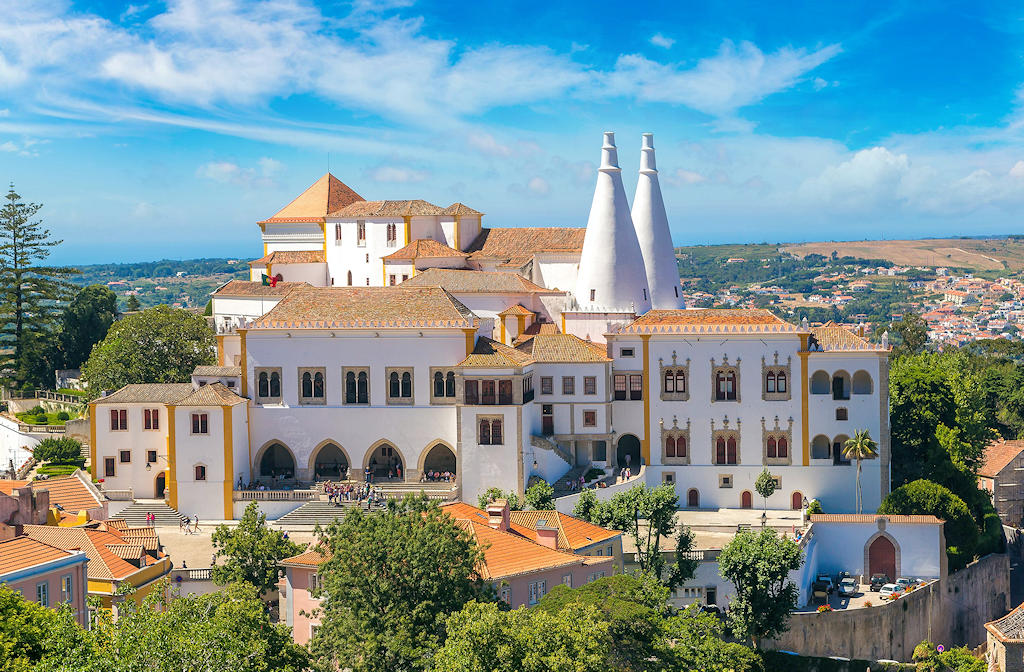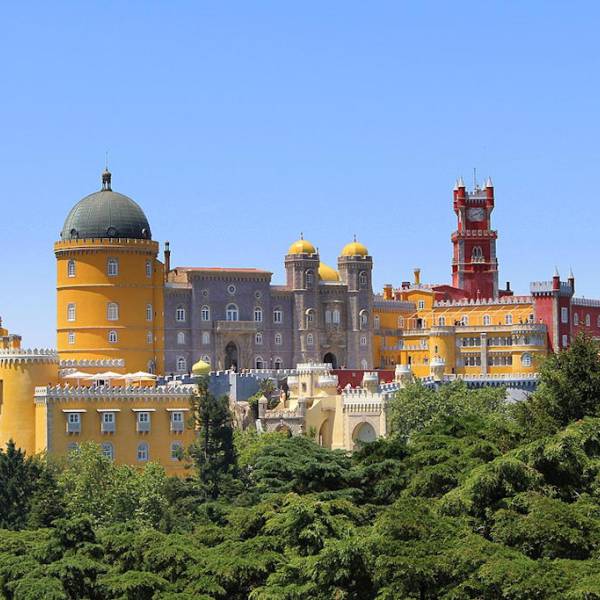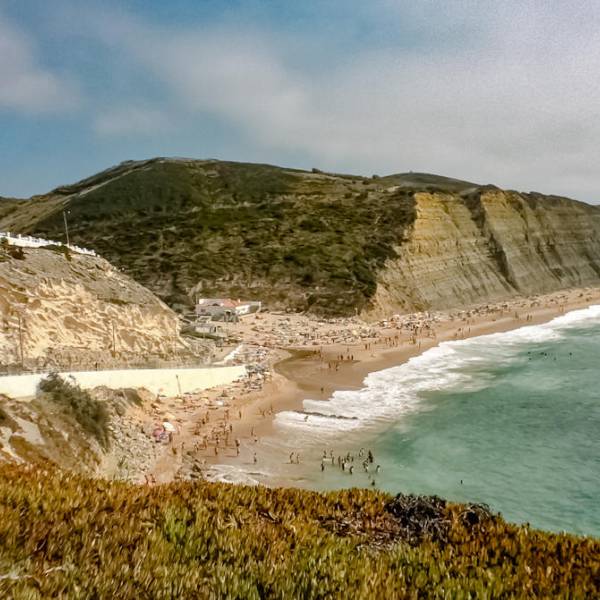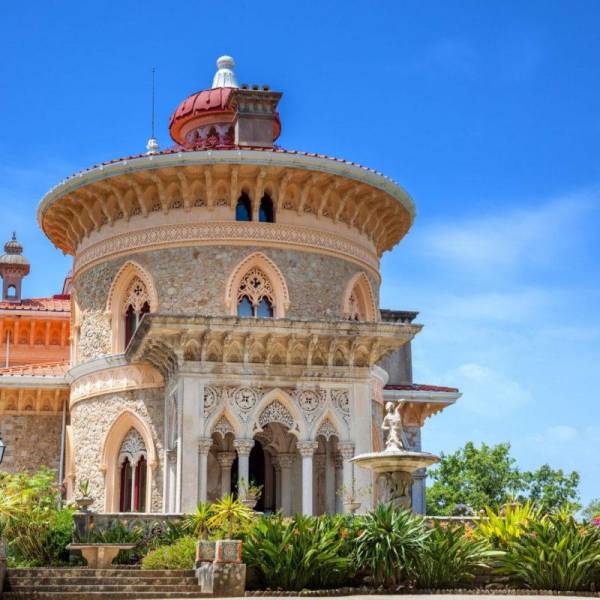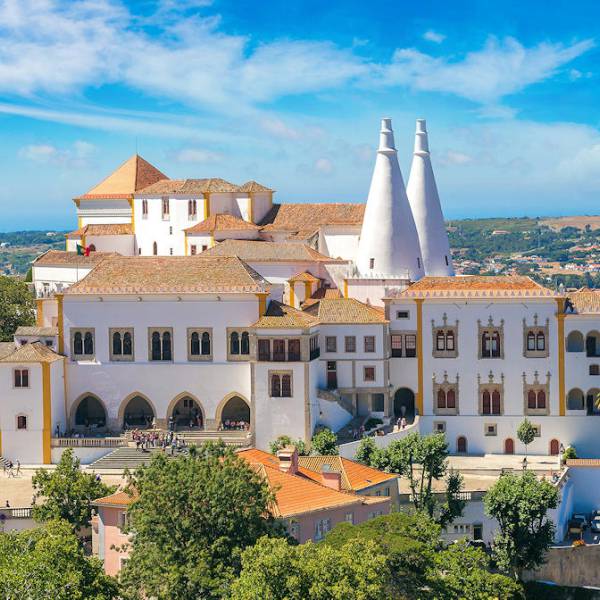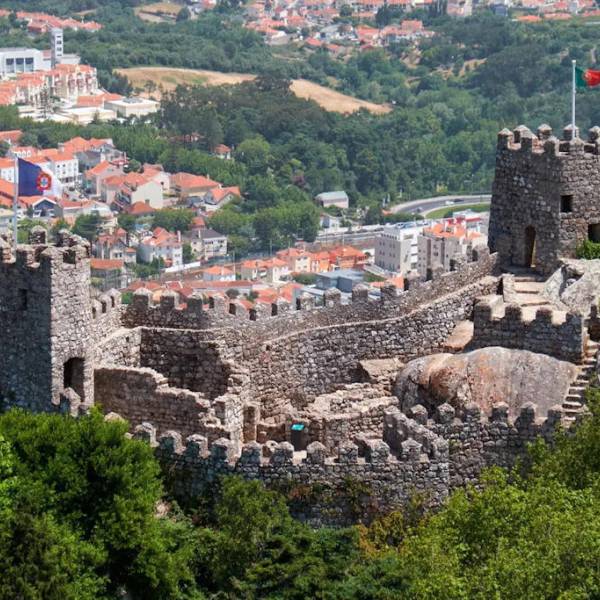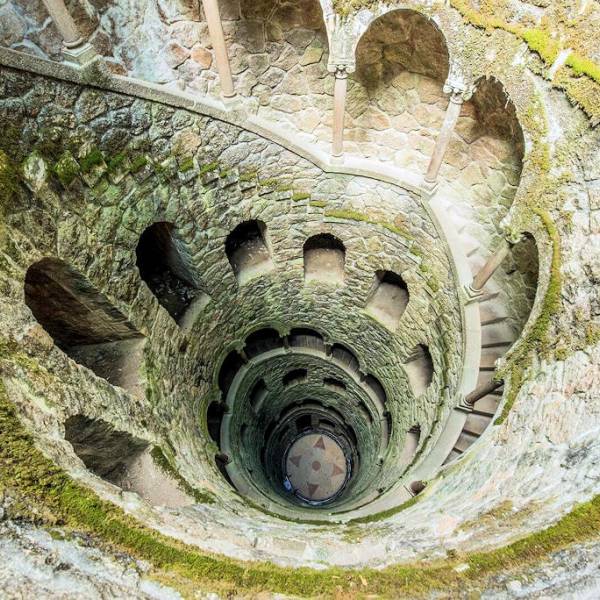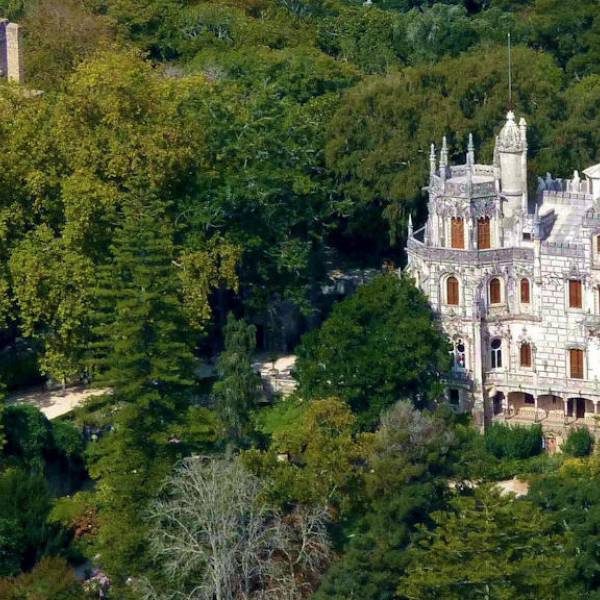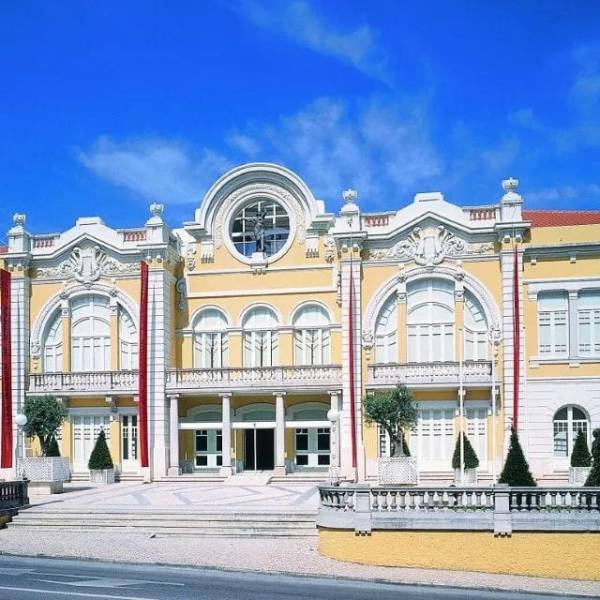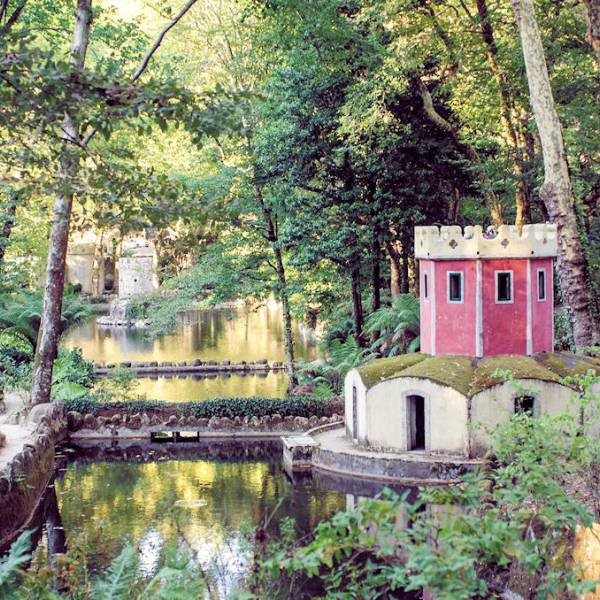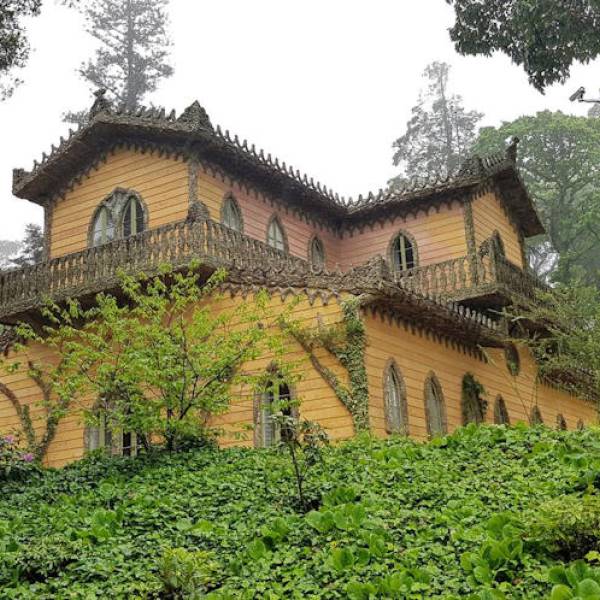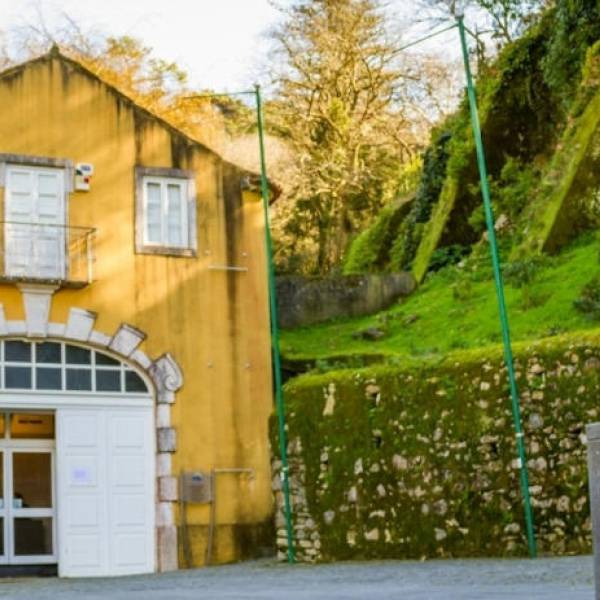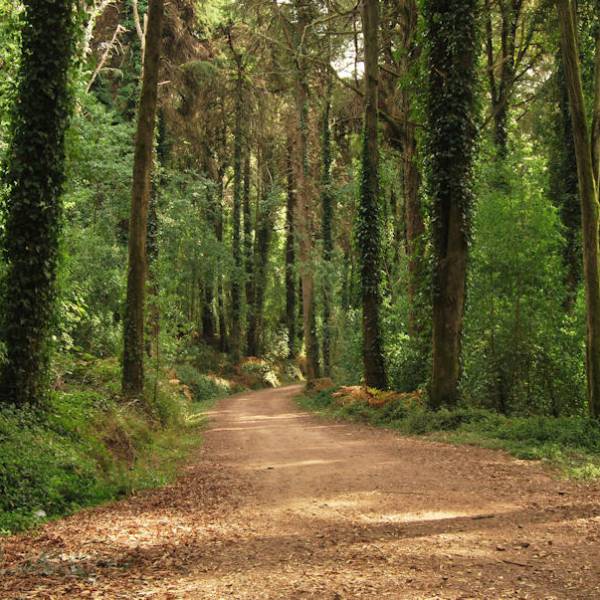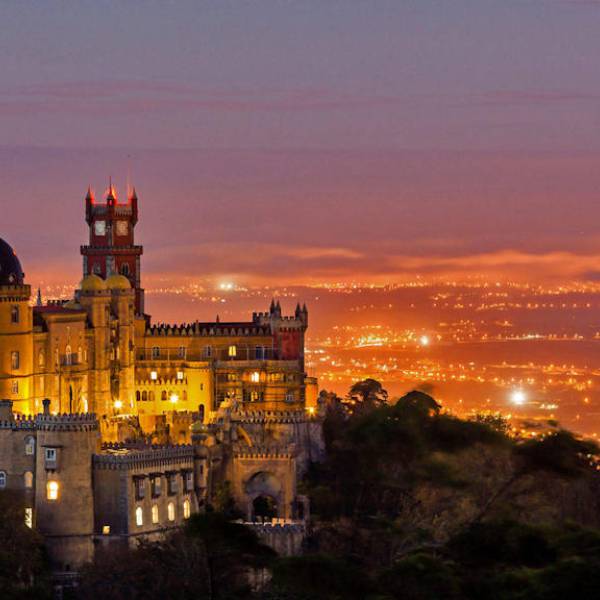Sintra National Palace is a must-visit day trip from Lisbon. Immerse yourself in the enchanting world of fairy tales as you explore this medieval palace. Marvel at its unique blend of Moorish and Portuguese architectural styles, admire the intricate tilework, and enjoy panoramic views of the surrounding landscape from its towers.
Throughout history, the Sintra National Palace played a significant role as a residence for the Portuguese royal family. It witnessed pivotal moments such as the reception of the news of the discovery of Brazil by King Manuel I, the birth and death of King Afonso V, the imprisonment of King Afonso VI, and the proclamation of King John II. Its walls hold the echoes of royal events and the secrets of the past.
In 2008, Sintra National Palace became the most visited palace in Portugal, attracting over 408,000 visitors. Managed by Parques de Sintra - Monte da Lua, it is one of the many remarkable historical sites and monuments in the municipality of Sintra. The palace has been classified as a National Monument since 1910, recognizing its architectural and historical significance.
The history of Sintra National Palace traces back to the 14th century when it was allegedly donated by King John I of Portugal to the Count of Seia, only to return to royal possession shortly afterward. The palace underwent extensive reconstruction in the 15th century, incorporating Andalusian tiles to embellish its interiors. The Manueline wing was added between 1505 and 1520, and construction of the Hall of Coats of Arms began in 1508. Notably, the Manueline wing exhibits limestone door and fireplace frames adorned with decorative reliefs.
During the reign of King John III, the space between the Manueline and Joanine wings was built. In the 17th century, under the guidance of the Count of Soure, significant alterations and expansions took place. In the period from 1683 to 1706, during the reign of King Peter II, the palace's ceilings in some rooms were repainted.
In 1755, after the Lisbon earthquake, important restoration works were carried out, and the wing connecting the Garden of Preta to the Court of the Tanquinhos was constructed. A new decorative campaign was undertaken in 1863, adding further splendor to the palace's interiors.
During the final years of the monarchy, Sintra National Palace served as the summer residence of Queen Mother Maria Pia, the last royal inhabitant of the Palace of the Village. It hosted various receptions for statesmen, including Emperor Wilhelm II of Germany and President Émile Loubet of France, among others, who visited her son, the King.
Lisbon.vip Recommends
The Hall of Coats of Arms is adorned with the coats of arms of 72 Portuguese noble families and the eight children of King Manuel I. It was constructed between 1516 and 1520, and its grandeur reflects the power and influence of the Portuguese monarchy.
The Swan Room derives its name from the intricate ceiling decoration featuring graceful swans. This room served as a meeting place for important occasions and received distinguished guests throughout history. The walls are adorned with stunning azulejos (Portuguese ceramic tiles) that depict scenes from the fables of La Fontaine.
The Magpies Room, on the other hand, showcases a vibrant and colorful interior. Its walls are covered with azulejos depicting a playful scene of magpies, flowers, and fruits. This room was traditionally used for banquets and festivities, where the royal court would gather to celebrate special occasions.
The Cozinha, or Kitchen, is a fascinating area that gives visitors a glimpse into the culinary practices of the past. It features large stone fireplaces, traditional cooking utensils, and an impressive collection of copper pots and pans. The Cozinha offers insight into the elaborate culinary preparations that took place within the palace walls.
Another notable room is the Chinese Room, which exemplifies the influence of Eastern culture on Portuguese art and design. The walls are covered with exotic Chinese motifs, and the ceiling is adorned with intricate carvings. This room served as a private chamber for the Portuguese royal family and offered a serene and contemplative atmosphere.
In addition to its remarkable interiors, Sintra National Palace boasts beautiful courtyards and gardens. The central courtyard, known as the Patio da Rainha (Queen's Courtyard), features a Renaissance-style arcade and a decorative well. This courtyard served as a gathering space for the royal court and was a place of leisure and entertainment.
The surrounding gardens are meticulously landscaped and offer a peaceful retreat for visitors. Lush greenery, manicured hedges, and vibrant flowers create a serene environment that complements the grandeur of the palace. The gardens provide picturesque views of the Sintra landscape and are perfect for a leisurely stroll or a moment of reflection.
Today, Sintra National Palace stands as a testament to Portugal's rich history and architectural heritage. It offers visitors a captivating journey through time, allowing them to immerse themselves in the opulence and grandeur of the past. The palace continues to be a significant cultural landmark, attracting tourists from around the world who are fascinated by its architectural splendor and royal history.
Whether you are an architecture enthusiast, a history buff, or simply looking to experience the beauty of Portugal, a visit to Sintra National Palace is sure to leave a lasting impression. The blend of architectural styles, the intricate interior decorations, and the enchanting surroundings make it a must-see destination in Sintra.
Map View


